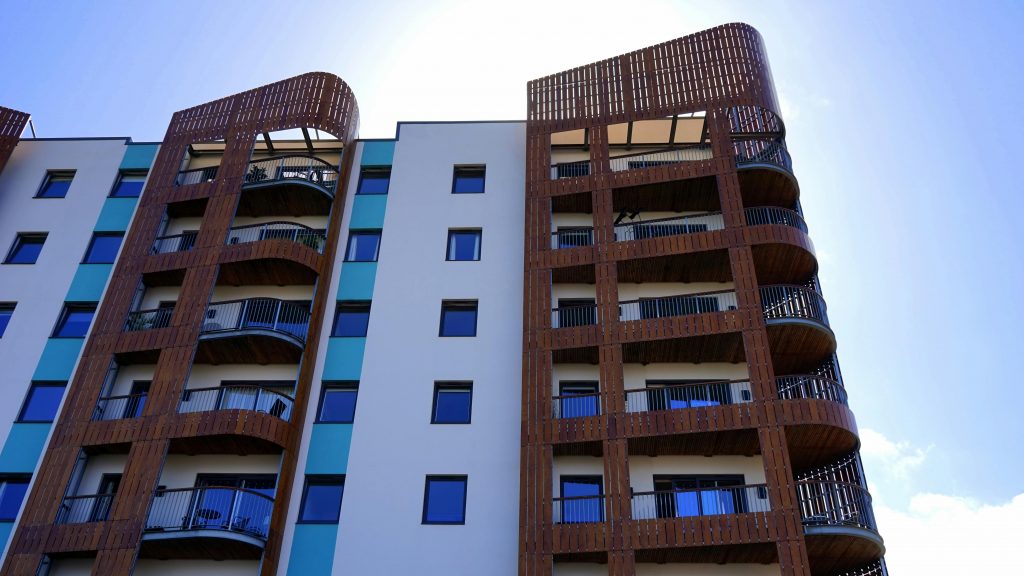Social housing in the UK faces many challenges, from rising energy costs to inefficient heating systems that leave tenants struggling to stay warm. With a growing focus on reducing fuel poverty and making homes more energy-efficient, innovative heating solutions like NexGen infrared heating offer a sustainable, cost-effective alternative to traditional gas and electric convection heating.
By incorporating NexGen infrared heating with solar panels, social housing providers can significantly lower tenants’ energy bills, improve living conditions, and contribute to net-zero targets. In this article, we explore how this technology benefits both tenants and housing associations while making long-term financial sense.
Why Social Housing Needs an Energy-Efficient Heating Solution
Many social housing properties rely on old, inefficient gas boilers, electric heaters or electric storage heaters, which can be costly to run and often fail to distribute heat evenly. As energy prices continue to rise, tenants are left with higher heating bills and poor thermal comfort.
Additionally, gas boilers are gradually being phased out as the UK transitions to low-carbon heating solutions. The government’s Future Homes Standard aims to end the installation of gas boilers in new homes by 2025, and with the growing need to decarbonise existing housing stock, councils and housing associations must look for modern, sustainable alternatives.
How NexGen Infrared Heating Benefits Tenants
Consistent Warmth and Comfort
Unlike convection heating, which warms the air and leads to uneven temperatures and heat loss, infrared heating works by warming objects and surfaces directly. This means that walls, floors, and furniture retain heat, creating a stable indoor temperature and eliminating cold spots and draughts. Tenants experience a more comfortable living environment without the need for constantly adjusting the thermostat.
Lower Energy Bills
One of the biggest advantages of NexGen infrared heating is its high energy efficiency. Since it heats people and objects directly, it requires less energy to maintain comfortable temperatures. Compared to gas boilers and electric convection heaters, NexGen infrared heating can cut energy consumption by up to 50%, leading to substantial savings on heating bills.
Healthier Living Conditions
Damp and mould are common issues in older social housing properties, often caused by poor insulation and ineffective heating. Traditional radiators and storage heaters rely on air circulation, which increases humidity and contributes to mould growth. Infrared heating, on the other hand, keeps walls and surfaces dry, preventing mould and damp-related respiratory problems, which can be particularly beneficial for tenants with asthma or allergies.
Combining NexGen Infrared Heating with Solar Panels for Maximum Savings
While infrared heating alone is highly efficient, pairing it with solar panels and battery storage creates a self-sufficient, low-cost heating system.
Using Free Solar Energy for Heating
Solar panels generate free electricity during daylight hours, which can power infrared heating panels. In many cases, this means tenants can heat their homes for little to no cost during the day, reducing their reliance on grid electricity. Even during cloudy days, the energy savings can be significant, making infrared heating even more cost-effective.
Battery Storage for Night-Time Heating
By adding a battery storage system, excess electricity generated during the day can be stored and used at night, ensuring a continuous and affordable heating supply. This setup allows tenants to maximise their energy savings and further reduce dependence on external energy providers.
Long-Term Cost Benefits for Housing Providers
For councils and housing associations, investing in NexGen infrared heating with solar power offers long-term financial savings. Unlike gas boilers, which require regular servicing and costly repairs, infrared heating panels have minimal maintenance requirements and a lifespan of over 20 years. The upfront investment can be offset by reduced operational costs, government incentives, and improved Energy Performance Certificate (EPC) ratings, which help meet regulatory targets.
A Sustainable Future for Social Housing
The UK’s transition to low-carbon heating is essential for both environmental and economic reasons. NexGen infrared heating provides an immediate solution that benefits both tenants and housing providers, offering lower energy bills, improved health conditions, and long-term sustainability.
By integrating this technology with solar panels and battery storage, social housing properties can become more self-sufficient, reducing energy costs while supporting the UK’s net-zero ambitions. With government incentives available for renewable energy solutions, now is the perfect time for councils and housing associations to invest in cleaner, smarter heating solutions.


